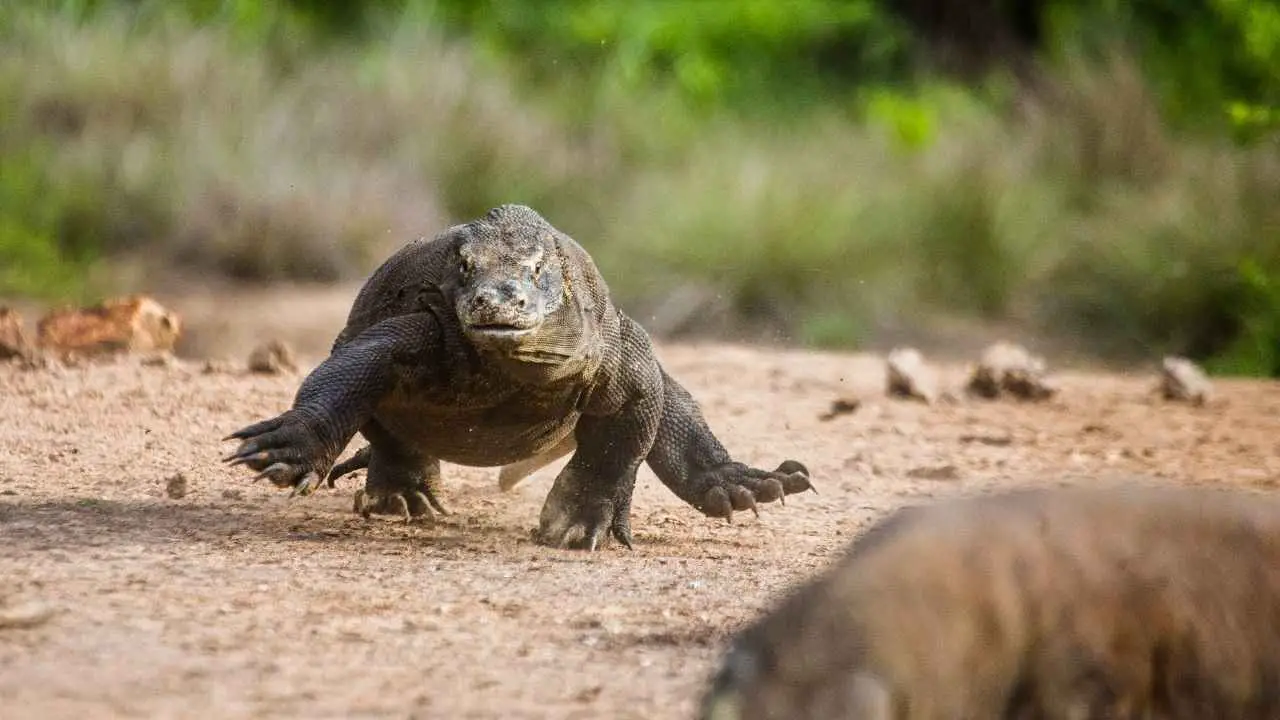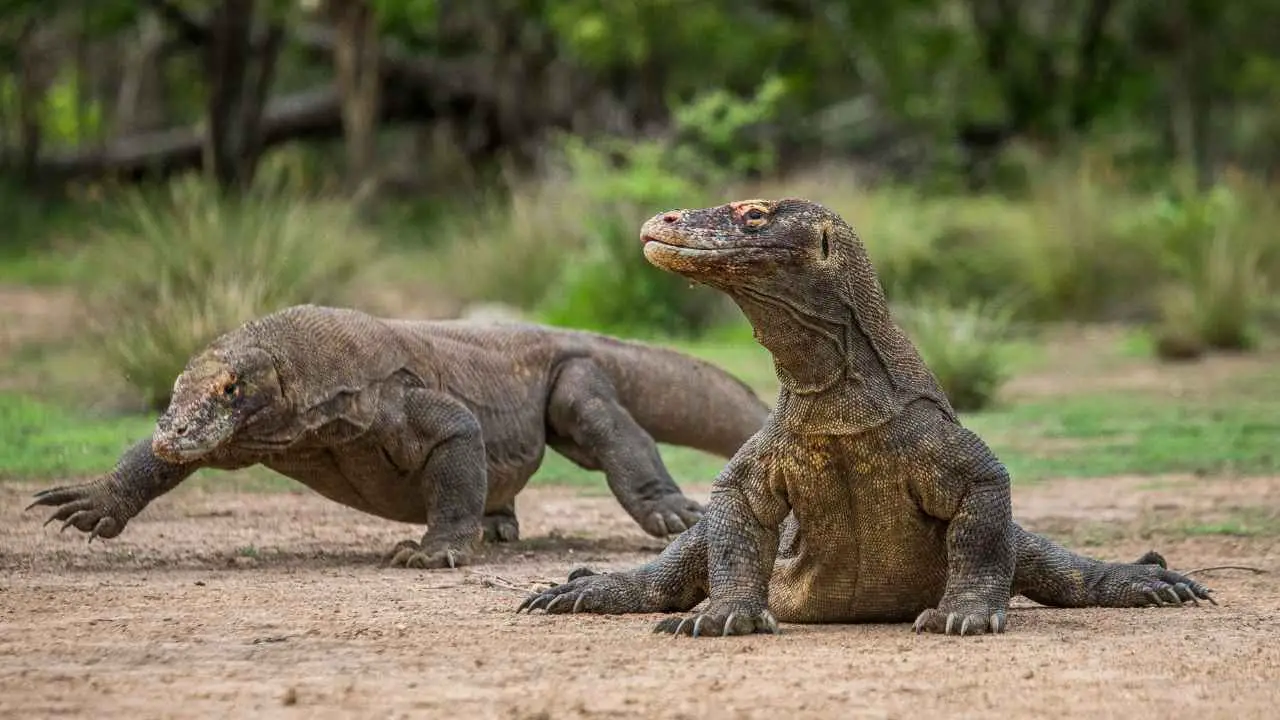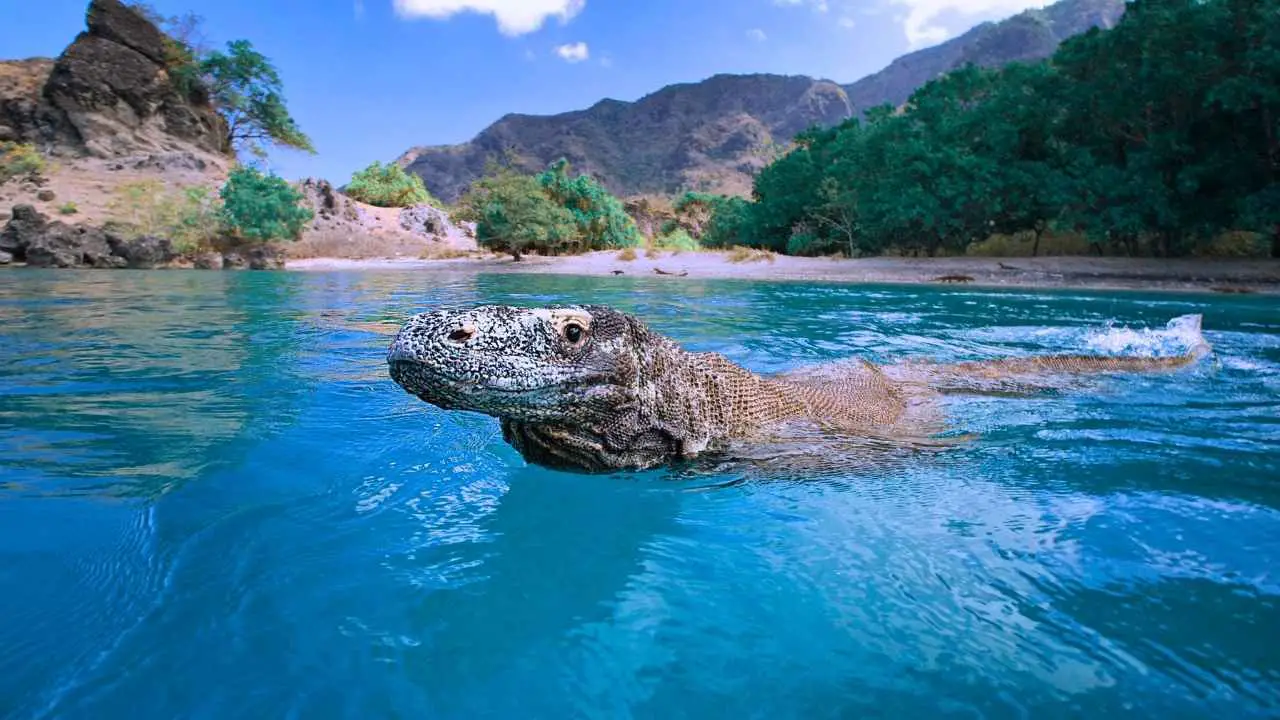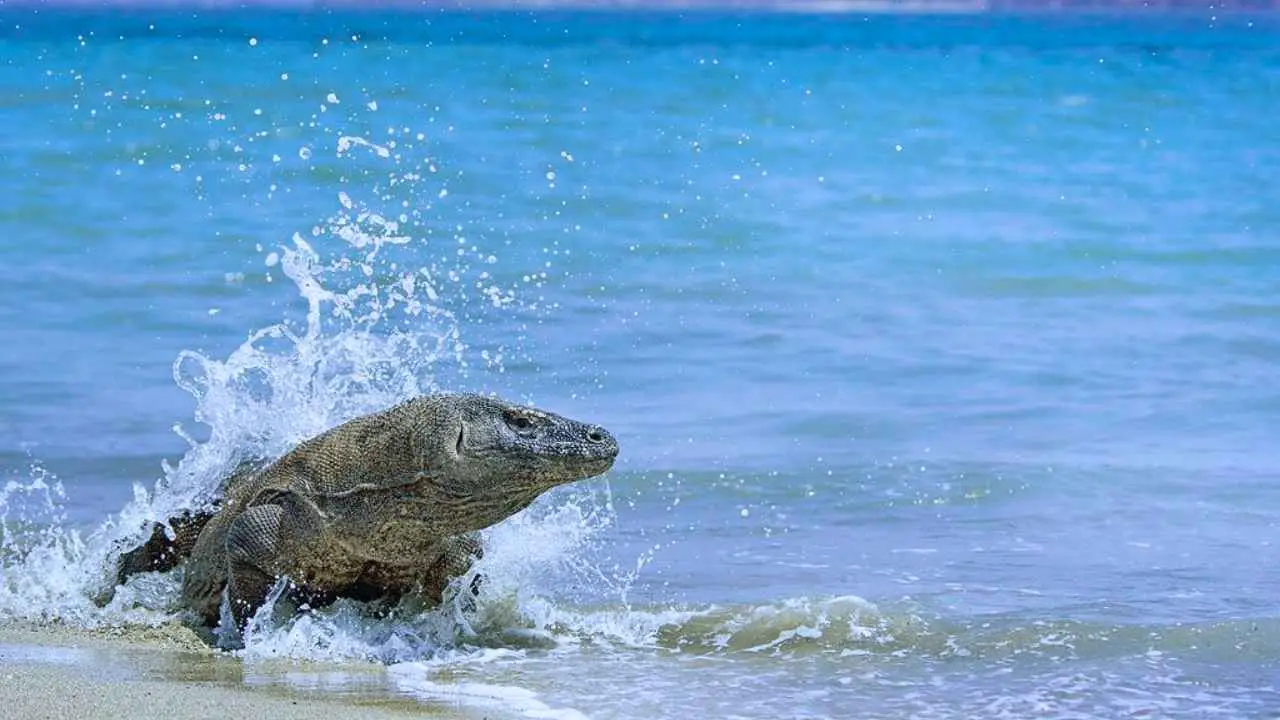The Komodo dragon, the biggest lizard in the world, is an amazing animal noted for its size, power, and distinctive hunting skills. But how fast is a komodo dragon? Assessing a Komodo dragon’s speed is fascinating from an academic perspective, but it also provides insight into the creature’s hunting tactics and how it moves around its habitat. This article will examine the Komodo dragon’s speed and look into the elements that lead to its amazing agility and prowess in the field.
How fast do Komodo dragons run?

While running, a Komodo dragon may achieve up to 10 to 13 mph (16 to 21 km/hr), but they are not designed for sustained speed over extended distances. Running for long periods is difficult for them because of their large bodies and short, stocky legs.
Not only can Komodo dragons run, but they can also walk quite well. They typically travel 1 to 2 miles (1.6 to 3.2 kilometers) every day at a slow and careful pace in search of food and acceptable habitats. Compared to their running pace, their walking speed is noticeably slower.
How far can a Komodo dragon run?

A Komodo dragon can run between 100 and 300 meters(328 and 984 feet) on average. Taking into account the size and physiology of the Komodo dragon, this distance may not appear remarkable in comparison to many other creatures. Komodo dragons are more difficult to run than other creatures because of their short, stocky legs and low body profile. This is in contrast to species with longer limbs or a more streamlined form.
Usually, they walk or trot slowly but steadily as their main means of mobility. They can efficiently navigate their native surroundings and preserve energy because of their sluggish mobility.
Is the speed of a Komodo Dragon consistent?
A Komodo dragon’s speed varies and is influenced by a variety of variables. Age, size, health, and the range of prey in the dragon’s environment are a few examples of these variables.
Komodo dragons are often quicker and more agile as they grow younger and smaller. This is most likely a result of smaller people having less body mass to move, which enables them to move at faster rates. Furthermore, their build may make it easier for them to move through dense foliage. Additionally, an unwell or injured Komodo dragon might not be able to move as swiftly as one that is healthy.
How Does The Komodo Dragon’s Speed Help It Hunt?

One of the main ways the Komodo dragon’s speed helps in hunting is by enabling them to accelerate quickly in order to surprise their victim. Komodo dragons are ambush predators that wait quietly for the right opportunity to attack. When the chance arises, they quickly attack their unwary victim by using their powerful muscles.
Their capacity to track down injured or helpless prey is another aspect of their speed that enhances their hunting success. Komodo dragons hunt by biting their prey with their poisonous fangs. They can chase and catch fleeing animals over great distances because of their speed and their poison.
The Komodo dragon’s speed also helps them survive by allowing them to stay clear of potential dangers and risky situations. Even though they are the top predators, they still have to contend with rivals and run into other predators. They can reduce the hazards involved in such interactions by being able to move swiftly and escape when required.
Comparing the speed of Komodo Dragons to other animals

| Animal | Speed Comparison |
| Komodo Dragon | Not very fast runners, approximately 20 km/h (12 mph). |
| Deer (various) | Faster than Komodo Dragons, can run at speeds of up to 48 km/h (30 mph). |
| Wild Boar | Faster than Komodo Dragons, with speeds of up to 56 km/h (35 mph). |
| Goats (various) | Faster than Komodo Dragons, with speeds ranging from 32 to 48 km/h (20-30 mph). |
| Humans | Faster than Komodo Dragons, with average running speeds of 24-32 km/h (15-20 mph). |
Can humans outrun the Komodo dragon?
Yes, Humans can outrun Komodo dragons. The maximum speed at which a human can run is around 28 miles per hour. This is a lot quicker than the Komodo dragon’s maximum speed, which is thought to be about 11 miles per hour.
Humans are able to keep a steady pace across greater distances, despite the Komodo dragon’s potential advantage over them in short spurts.
How fast can a Komodo dragon run compared to a human?
Komodo dragons can do brief bursts of up to 13 miles per hour (21 kilometers per hour), yet the typical person can run faster.
Humans are quicker runners than reptile species on average, who can only maintain running speeds of around 8 to 12 miles per hour (13 to 19 kilometers per hour) for short periods.
Are Komodo dragons fast animals?
No, the Komodo dragon’s speed isn’t too fast, despite its enormous build-up. Although these reptiles may move quickly when necessary, they are often thought of as slow-moving creatures. Komodo dragons can sprint for brief periods at an average speed of around 11 mph (19 kph). When compared to other predators in their ecosystem, this is quite sluggish. When it comes to speed and agility, their vast bulk and powerful physique could be a liability.
Can Komodo dragons swim in the water?

Even though they are typically terrestrial creatures, they can swim in the water if necessary. Komodo dragons can navigate the water with a fair amount of ease thanks to their long, powerful tails, which serve as propellers. Similar to how a crocodile swims, they move ahead by swiping their tail from side to side. They can go long distances if necessary because of their strong limbs and tail combination that allows them to paddle through the water.
How fast are Komodo dragons in the water?

Komodo dragons can swim up to 5 kilometers per hour or around 3 miles per hour. Because they can swim and are frequently found near bodies of water, Komodo dragons are considered semi-aquatic. They are nonetheless fairly adept in the water, even if they might not be the quickest swimmers when compared to aquatic creatures like dolphins or sharks.
How far can a Komodo dragon swim?
In open water, a Komodo dragon can swim up to 500 meters (1,640 ft). They can traverse water channels between several islands in their natural environment since they have been seen swimming great distances. Their remarkable swimming prowess enables them to discover new areas, look for food, and even elude any dangers.


Leave a Reply